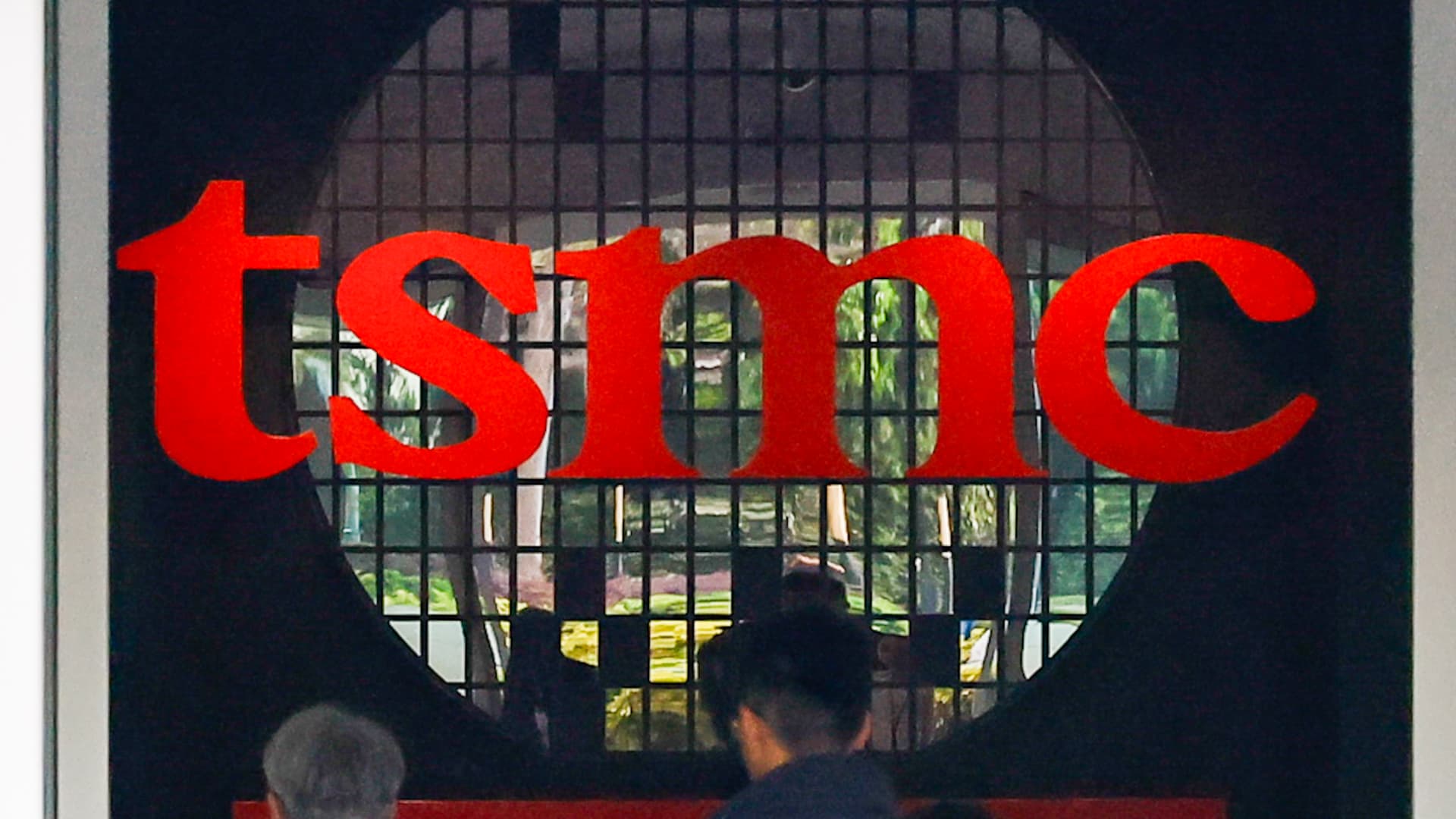Washington D.C.'s Black Lives Matter Plaza: A Case Study In Symbolic Politics

Welcome to your ultimate source for breaking news, trending updates, and in-depth stories from around the world. Whether it's politics, technology, entertainment, sports, or lifestyle, we bring you real-time updates that keep you informed and ahead of the curve.
Our team works tirelessly to ensure you never miss a moment. From the latest developments in global events to the most talked-about topics on social media, our news platform is designed to deliver accurate and timely information, all in one place.
Stay in the know and join thousands of readers who trust us for reliable, up-to-date content. Explore our expertly curated articles and dive deeper into the stories that matter to you. Visit Best Website now and be part of the conversation. Don't miss out on the headlines that shape our world!
Table of Contents
Washington D.C.'s Black Lives Matter Plaza: A Case Study in Symbolic Politics
The vibrant yellow lettering of "Black Lives Matter" painted on 16th Street NW, just blocks from the White House, remains a powerful visual testament to a pivotal moment in American history. Renamed Black Lives Matter Plaza in June 2020, this section of Washington D.C. became more than just a street; it transformed into a potent symbol of the ongoing fight for racial justice and equality, sparking intense debate and serving as a compelling case study in the impact of symbolic politics.
This article delves into the creation, impact, and lasting legacy of Black Lives Matter Plaza, exploring its significance within the broader context of social movements and political discourse.
The Birth of a Symbol: A City's Response to a National Uprising
The summer of 2020 witnessed unprecedented levels of civil unrest following the police killing of George Floyd. Protests erupted across the United States, demanding systemic change and an end to police brutality against Black Americans. Washington D.C., the nation's capital, was no exception. Amidst the demonstrations, Mayor Muriel Bowser's decision to rename the street and paint the iconic message was a bold move, seen by many as a powerful show of solidarity with the Black Lives Matter movement. This act was not without its critics, however, highlighting the inherent complexities of symbolic gestures in a deeply divided political landscape.
More Than Just Paint: The Meaning and Implications of Black Lives Matter Plaza
The renaming of 16th Street wasn't merely an aesthetic change; it represented a significant political statement. The location, in close proximity to the White House and other government buildings, amplified the message, placing the demand for racial justice directly before the seat of American power. The vibrant yellow lettering became an instantly recognizable image, circulated globally and featured prominently in news coverage, social media, and even works of art.
- A Symbol of Solidarity: For many, the plaza served as a tangible representation of support for the Black Lives Matter movement, offering a sense of hope and validation.
- A Catalyst for Dialogue: The plaza ignited intense public conversations about race, inequality, and the role of government in addressing systemic racism. It forced a national reckoning, prompting discussions in homes, workplaces, and across social media platforms.
- A Target of Controversy: The plaza also faced significant backlash. Some criticized the mayor's decision as overly political, while others viewed the message as divisive or even inappropriate for the nation's capital. These criticisms underscored the inherent risks and challenges of using symbolic gestures to address complex social issues.
The Enduring Legacy: Symbolic Politics and Social Change
The story of Black Lives Matter Plaza is not just about a painted street; it's a powerful illustration of the role of symbolic politics in social movements. While symbols alone cannot dismantle systemic racism, they can play a crucial role in raising awareness, mobilizing support, and shaping public narratives. The plaza served as a focal point for activism, sparking further dialogue and prompting continued efforts towards racial justice.
While the paint has since faded, and the street's official name has reverted, the impact of Black Lives Matter Plaza remains undeniable. It serves as a reminder of a pivotal moment in American history, a testament to the power of collective action, and a crucial case study in the complex and often controversial role of symbolic politics in driving social change.
Further Reading:
- [Link to an article about the creation of Black Lives Matter Plaza]
- [Link to an article analyzing the political impact of the plaza]
- [Link to a news report on the protests of 2020]
Call to Action: Learn more about the ongoing fight for racial justice and equality by researching organizations dedicated to this vital cause. Engage in constructive dialogue and actively work towards creating a more equitable society for all.

Thank you for visiting our website, your trusted source for the latest updates and in-depth coverage on Washington D.C.'s Black Lives Matter Plaza: A Case Study In Symbolic Politics. We're committed to keeping you informed with timely and accurate information to meet your curiosity and needs.
If you have any questions, suggestions, or feedback, we'd love to hear from you. Your insights are valuable to us and help us improve to serve you better. Feel free to reach out through our contact page.
Don't forget to bookmark our website and check back regularly for the latest headlines and trending topics. See you next time, and thank you for being part of our growing community!
Featured Posts
-
 West Indies Coach Sammy Seeks Greater Commitment From Players Post Match
May 25, 2025
West Indies Coach Sammy Seeks Greater Commitment From Players Post Match
May 25, 2025 -
 Who Will Win Roland Garros 2025 Analyzing The Top Seeds Alcaraz Gauff Etc
May 25, 2025
Who Will Win Roland Garros 2025 Analyzing The Top Seeds Alcaraz Gauff Etc
May 25, 2025 -
 Uk Border Security The Growing Threat Of Yacht Based Migrant Smuggling
May 25, 2025
Uk Border Security The Growing Threat Of Yacht Based Migrant Smuggling
May 25, 2025 -
 Disposable Vape Ban Why Are People Panic Buying
May 25, 2025
Disposable Vape Ban Why Are People Panic Buying
May 25, 2025 -
 Travel Industry Slows Nows The Time To Use Your Rewards Points
May 25, 2025
Travel Industry Slows Nows The Time To Use Your Rewards Points
May 25, 2025
Latest Posts
-
 Tsmc Q2 Profit Jumps 61 Exceeding Expectations Amidst Robust Ai Chip Demand
Jul 17, 2025
Tsmc Q2 Profit Jumps 61 Exceeding Expectations Amidst Robust Ai Chip Demand
Jul 17, 2025 -
 Nvidias Ai Chip Sales To China A Reversal Of Us Export Controls
Jul 17, 2025
Nvidias Ai Chip Sales To China A Reversal Of Us Export Controls
Jul 17, 2025 -
 Love Island Usas Amaya And Bryan Post Show Relationship Update
Jul 17, 2025
Love Island Usas Amaya And Bryan Post Show Relationship Update
Jul 17, 2025 -
 Ynw Melly Double Murder Case Retrial Set For September Following Mistrial
Jul 17, 2025
Ynw Melly Double Murder Case Retrial Set For September Following Mistrial
Jul 17, 2025 -
 De Chambeau Explains Why Public Courses Present Unexpected Challenges
Jul 17, 2025
De Chambeau Explains Why Public Courses Present Unexpected Challenges
Jul 17, 2025
